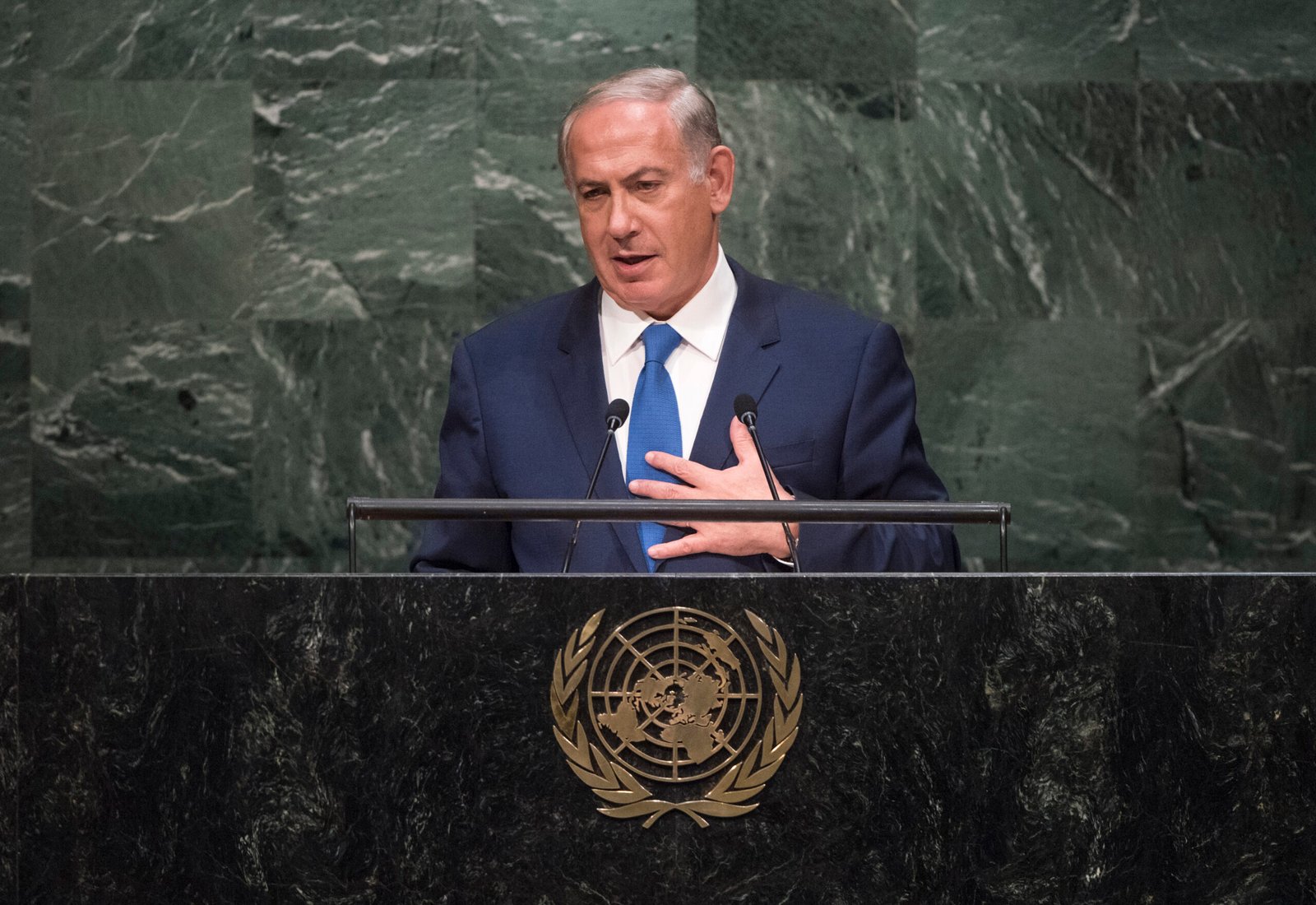World News
Divisions over US support for Israel deepen at State Department on November 9, 2023 at 11:00 am

Israel’s war against Hamas is deepening divisions among nonpartisan American government officials, who are raising alarm that the Biden administration’s ironclad commitment to Israel is failing to take into account key issues of concern.
Letters and memos of dissent are circulating among State Department staff. The documents are described as being led by early and mid-career officials staking out a position that puts them at odds with senior leaders.
President Biden has rallied behind Israel’s right to defend itself following the brutal Oct. 7 attack by Hamas, a U.S.-designated terrorist organization, that killed 1,400 people, the majority of them civilians. More than 240 other people were kidnapped by Hamas and taken back to Gaza as hostages.
But the exorbitant death toll in Gaza, where an estimated 10,000 people have been killed, combined with the fast-track shipment of U.S. weapons to Israel are weighing heavily on U.S. diplomats.
Josh Paul resigned on Oct. 18 from his position at the State Department, where he worked on arms transfers to Israel. He said others at State have reached out to him since his resignation.
“I’m hearing essentially two strands of argument, or of concern,” Paul said in a call with The Hill. “One is, what you might call a moral stand – where people joined government to do good and they don’t like facilitating the massive death of civilians, and they don’t like when there is no space for policy debate about these basic human rights issues.”
The other argument Paul said he’s hearing is concern that the Biden administration’s approach towards Israel is isolating the U.S. in the region and undermining America’s position on the global stage.
“The current policy approach is having massively negative consequences for the U.S. foreign policy, both in terms of our relationships in the Middle East and more broadly in terms of our strategic competition with the People’s Republic of China,” he said.
The president of the American Foreign Service Association (AFSA), the union representing the State Department’s Foreign Service members, said employees are caught in a difficult situation.
“We know it’s a fraught issue, we know there’s a lot of emotions involved. No one can be unmoved seeing those images every night on the evening news, and we know that,” said Tom Yazdgerdi, the AFSA president.
These diplomats are tasked with weighing the hard choices of what is necessary for U.S. national security versus what, if any, potential collateral damage may occur.
Yazdgerdi said that State Department leadership, and separately AFSA have met with employee organizations to make sure “they’re being supported” and heard.
“Arab Americans in Foreign Affairs Agencies, American Muslims and Friends at State, Jewish Americans in Diplomacy, these are all employee organizations that we have met with or will meet to make sure they’re being supported because obviously what’s happening in Israel and Gaza has domestic implications here. People feel unsafe, they feel maybe that they’re not being listened to,” he said.
“Of course, we endorse the opportunity for these groups to be heard. From what we’ve gathered, they’ve had meetings with senior leadership, including the Secretary, which is a positive development, he said.
The Biden administration has been walking a fine line, calling for humanitarian or tactical pauses that they hope will preserve Israel’s ability to carry out its military targeting of Hamas and allow an avenue to try and protect civilians.
Secretary of State Antony Blinken, following a trip to Israel, said Wednesday: “We believe there are additional steps that can and should be taken to try to minimize civilian casualties.”
Hundreds of staff in the U.S. Agency for International Development anonymously signed an open letter to Biden calling for an immediate ceasefire and cessation of hostilities, Foreign Policy reported.
And some State Department staff are pushing for the Biden administration to support a ceasefire and strike a more forceful tone with the Israelis in public, including criticism of Israeli military tactics and treatment of Palestinians, according to at least one draft dissent memo obtained by Politico.
Dissent channel memos are considered sacrosanct in the State Department and are supposed to remain private. The channel allows staff at any level to raise concerns to senior officials, in particular the Secretary of State, on opposing views to administration policy.
It’s always controversial if such memos become public, as their release, some say, can have a chilling effect on staff feeling comfortable to raise opposition to administration policy for fear of retribution.
Ben Fishman, who served on the National Security Council during the Obama administration, said the criticisms he’s hearing from State Department staff about the administration’s policy is “a general concern that the administration is not sufficiently addressing Palestinian, specifically civilian Gazan’s concerns.”
Fishman, now a senior fellow at The Washington Institute for Near East Policy, said he didn’t view the recommendations in the leaked dissent memo as representing a mutiny among State Department staff.
“The truth is, most people I think are reasonable and they understand the basis of this administration’s policy. And maybe they’re disappointed,” he said.
“The bottom line is that the uglier the war gets — it will most likely be ugly not better — you’ll probably see more voices like this. Hopefully we’ll see a change in the direction of the war, but that’s not my expectation.”
While the U.S. position towards Israel is generally shared by Western and democratic governments, Arab and Gulf nations are challenging the U.S. to push Israel to accept a ceasefire and are accusing Israel of war crimes.
The United Nations General Assembly late last month passed a resolution calling for a “humanitarian truce” between Israel and Hamas. The U.S. and 13 other nations voted against the resolution for failing to condemn Hamas’s attack on Oct. 7. Forty-five countries abstained.
In Paul’s resignation letter, he cited opposition to the surge in military support to Israel, criticizing the administration and lawmakers in Congress as acting on “an impulsive reaction built on confirmation bias, political convenience, intellectual bankruptcy, and bureaucratic inertia.”
Paul’s position in the State Department was to review and sign off on weapons transfers in line with administration policy, a process he said filtered through 20,000 arms transfer requests per year and that could be boiled down to a “no; yes; or yes, but.”
What prompted his resignation, Paul said, was that “there was no debate” on the weapons transfers to Israel in the wake of the Oct. 7 Hamas attack.
The administration has not identified what specifically it has sent to Israel, saying it is at least air defense supplies, munitions, armor and rifles.
Biden officials say they expect Israel to carry out its strikes within the bounds of international humanitarian law and there’s a legal debate surrounding how justified military actions are in neutralizing threats compared to the potential for civilian casualties.
Sen. Ben Cardin (D-Md.), in a briefing with reporters on Oct. 26, said he was not “ready to acknowledge that there is a misuse of weapons” on the part of Israel, and criticized Hamas as using civilians as human shields.
“We know they’re doing everything they possibly can to make it more difficult for Israel to accomplish its military objectives by putting innocent civilians in harm’s way. That’s their objective.”
But there’s growing divisions among Biden’s most ardent supporters in the Senate.
A group of 26 Democratic senators on Wednesday sent a letter to the president asking for more information on how Israel is working to mitigate civilian casualties.
“We respectfully ask your team to provide us with information relative to these two clear U.S. priorities: supporting an Israeli strategy that will effectively degrade and defeat the threat from Hamas and taking all possible measures to protect civilians in Gaza,” the senators wrote.
Israel’s war against Hamas is deepening divisions among nonpartisan American government officials, who are raising alarm that the Biden administration’s ironclad commitment to Israel is failing to take into account key issues of concern. Letters and memos of dissent are circulating among State Department staff. The documents are described as being led by early and…
Politics
Netanyahu’s UN Speech Triggers Diplomatic Walkouts and Mass Protests

What Happened at the United Nations
On Friday, Israeli Prime Minister Benjamin Netanyahu addressed the United Nations General Assembly in New York City, defending Israel’s ongoing military operations in Gaza. As he spoke, more than 100 delegates from over 50 countries stood up and left the chamber—a rare and significant diplomatic walkout. Outside the UN, thousands of protesters gathered to voice opposition to Netanyahu’s policies and call for accountability, including some who labeled him a war criminal. The protest included activists from Palestinian and Jewish groups, along with international allies.

Why Did Delegates and Protesters Walk Out?
The walkouts and protests were a response to Israel’s continued offensive in Gaza, which has resulted in widespread destruction and a significant humanitarian crisis. Many countries and individuals have accused Israel of excessive use of force, and some international prosecutors have suggested Netanyahu should face investigation by the International Criminal Court for war crimes, including claims that starvation was used as a weapon against civilians. At the same time, a record number of nations—over 150—recently recognized the State of Palestine, leaving the United States as the only permanent UN Security Council member not to join them.
International Reaction and Significance
The diplomatic walkouts and street protests demonstrate increasing global concern over the situation in Gaza and growing support for Palestinian statehood. Several world leaders, including Colombia’s President Gustavo Petro, showed visible solidarity with protesters. Petro called for international intervention and, controversially, for US troops not to follow orders he viewed as supporting ongoing conflict. The US later revoked Petro’s visa over his role in the protests, which he argued was evidence of a declining respect for international law.

Why Is This News Important?
The Gaza conflict is one of the world’s most contentious and closely-watched issues. It has drawn strong feelings and differing opinions from governments, activists, and ordinary people worldwide. The United Nations, as an international organization focused on peace and human rights, is a key arena for these debates. The events surrounding Netanyahu’s speech show that many nations and voices are urging new action—from recognition of Palestinian rights to calls for sanctions against Israel—while discussion and disagreement over the best path forward continue.
This episode at the UN highlights how international diplomacy, public protests, and official policy are all intersecting in real time as the search for solutions to the Israeli-Palestinian conflict remains urgent and unresolved.
News
Is a Nuclear-Powered Alien Spacecraft Flying Toward Earth?

A mysterious interstellar object speeding through our solar system has reignited debates about extraterrestrial technology — and whether Earth might currently be under quiet observation.
The object, known as 3I/ATLAS, is only the third confirmed interstellar visitor ever detected. Unlike ordinary comets, however, this cosmic traveler has baffled astronomers with its unusual brightness, strange trajectory, and lack of a visible cometary tail. While most scientists cautiously describe it as a natural body, one leading astrophysicist believes something much stranger is at play.

Harvard Scientist’s Bold Claim
Professor Avi Loeb of Harvard University, head of the Galileo Project, has suggested that 3I/ATLAS may in fact be a nuclear-powered alien spacecraft designed to test how humanity would respond to an interstellar visitor. He argues that its flight path is improbably precise, bringing it close to Mars, Venus, and Earth — a pattern highly unlikely to occur by chance.
Loeb also points out that telescope images show a glow inconsistent with ordinary dust behavior. Instead of trailing behind like a comet, the halo-like light appears to extend in unusual ways, sparking debate about whether the object could be emitting energy of its own.
Headed Toward Earth’s Neighborhood
3I/ATLAS is expected to make its closest approach in late 2025, passing near Mars before swinging by the inner solar system. Although Earth itself will be on the opposite side of the Sun when it comes closest, the alignment will still enable space-based observatories to capture sharper data.

Loeb has called on NASA and other agencies to use spacecraft already stationed near Mars or Jupiter — including the Juno mission — to take high-resolution photographs. He believes such efforts could reveal whether the interstellar object is truly natural, or the first technological probe humanity has ever encountered.
Should We Be Worried?
While most astronomers argue caution before jumping to alien conclusions, Loeb insists that scientific openness is key. “If it’s just a comet, we learn something new,” he said. “But if it’s a spacecraft, it would be the most important discovery in human history.”
For now, 3I/ATLAS remains a mysterious speck on astronomers’ charts, drifting closer with each passing day. Whether it proves to be a frozen remnant of another star system or something far more advanced, the interstellar visitor has already succeeded in one mission: reminding us how vast and unpredictable the universe really is.
News
AI Automation Could Cause Up to 20% Unemployment—A Workforce on the Brink

Stark Warning from Anthropic CEO Highlights Rapid Job Displacement Risk
The looming threat of widespread unemployment due to AI automation has sparked intense debate among experts, business leaders, and policymakers. Dario Amodei, CEO of Anthropic—the company behind the influential AI language model Claude—issued a stark warning that has sent shockwaves through corporate America:

“Up to half of all entry-level white collar jobs could disappear within the next one to five years, potentially pushing unemployment rates as high as 20% during this period.”
This dramatic forecast paints a picture of a rapid and unsettling transformation in the workforce, driven by AI technologies that can perform complex cognitive tasks.
Balancing Predictions: Worst-Case Scenarios vs. Moderate Impact
However, this forecast represents one end of a spectrum of expert predictions. While Amodei’s warning highlights the worst-case scenario driven by the swift adoption of AI agents capable of coding, analyzing data, drafting legal documents, and managing workflows around the clock, other analyses suggest a more moderate impact. For example, Goldman Sachs estimates that AI could temporarily displace about 6-7% of U.S. jobs, with unemployment rising by approximately half a percentage point during the adjustment period. Their research anticipates a more gradual transition with a mixture of job disruption and creation.

The Unprecedented Speed and Scope of AI-Driven Job Disruption
The truth likely lies somewhere in between. AI is advancing at unprecedented speed, and the scope of jobs affected spans far beyond blue-collar roles to white-collar positions that required college degrees and years of training. Entry-level roles such as customer service representatives, data entry clerks, junior analysts, and administrative assistants face the greatest near-term risk. Mid-level roles in accounting, marketing, law, and engineering could soon follow, with companies already laying off workers citing AI-driven efficiencies.
Preparing for an AI-Transformed Workforce: Adaptation Is Essential
Ultimately, the AI-driven job transformation is no longer a distant prospect but unfolding now. Whether unemployment spikes to 20% or stabilizes at lower levels depends on many factors, including business adoption rates, government policies, and the ability of workers to reskill. What is certain is that the workforce of tomorrow will look very different from today—and the time to prepare is right now.

 Business4 weeks ago
Business4 weeks agoDisney Loses $3.87 Billion as Subscription Cancellations Surge After Kimmel Suspension

 Entertainment4 weeks ago
Entertainment4 weeks agoWhat the Deletion Frenzy Reveals in the David and Celeste Tragedy

 Entertainment4 weeks ago
Entertainment4 weeks agoExecutive Producer Debut: How Celia Carver Created Festival Hit ‘Afterparty’

 Health4 weeks ago
Health4 weeks agoRussia Claims 100% Success With New mRNA Cancer Vaccine

 Business3 weeks ago
Business3 weeks agoWhy Are Influencers Getting $7K to Post About Israel?

 Health4 weeks ago
Health4 weeks agoWhy Did Gen Z QUIT Drinking Alcohol?

 Advice4 weeks ago
Advice4 weeks agoHow AI Is Forcing Everyone Into the Entrepreneur Game

 Entertainment3 weeks ago
Entertainment3 weeks agoKeith Urban and Nicole Kidman Split After 20 Years as Actress Files for Divorce






























